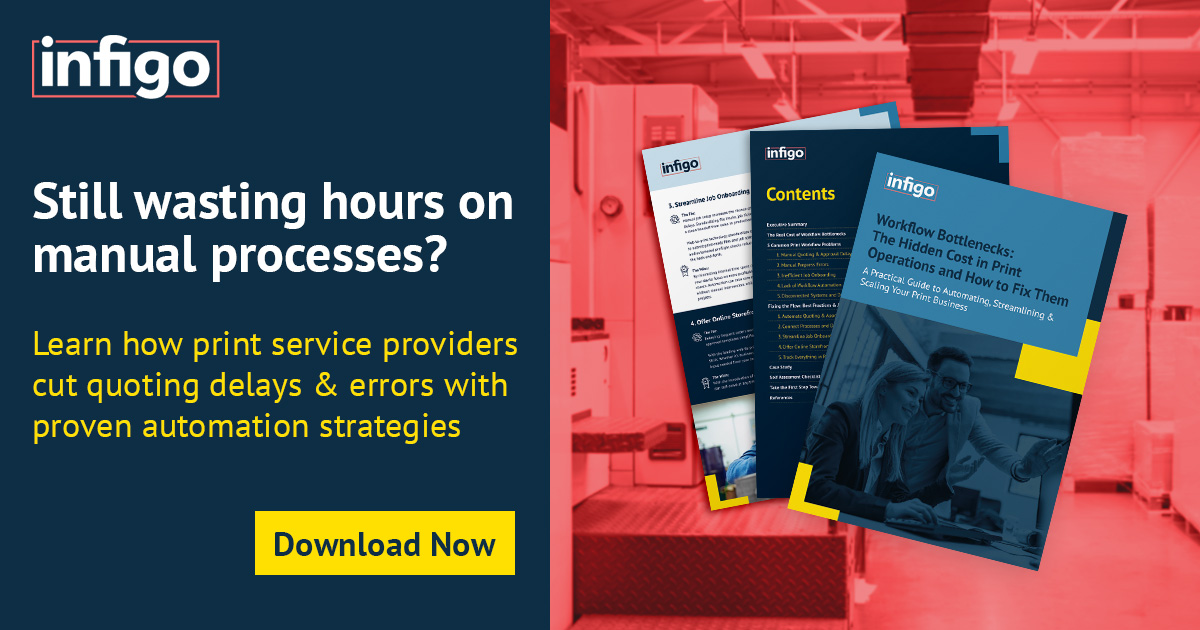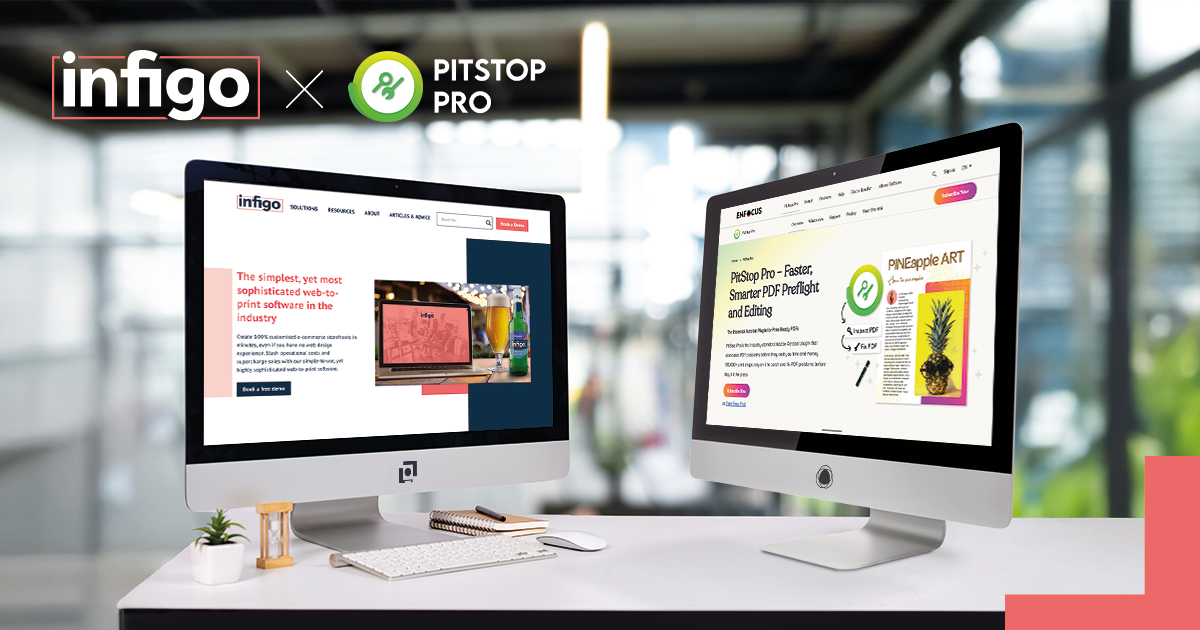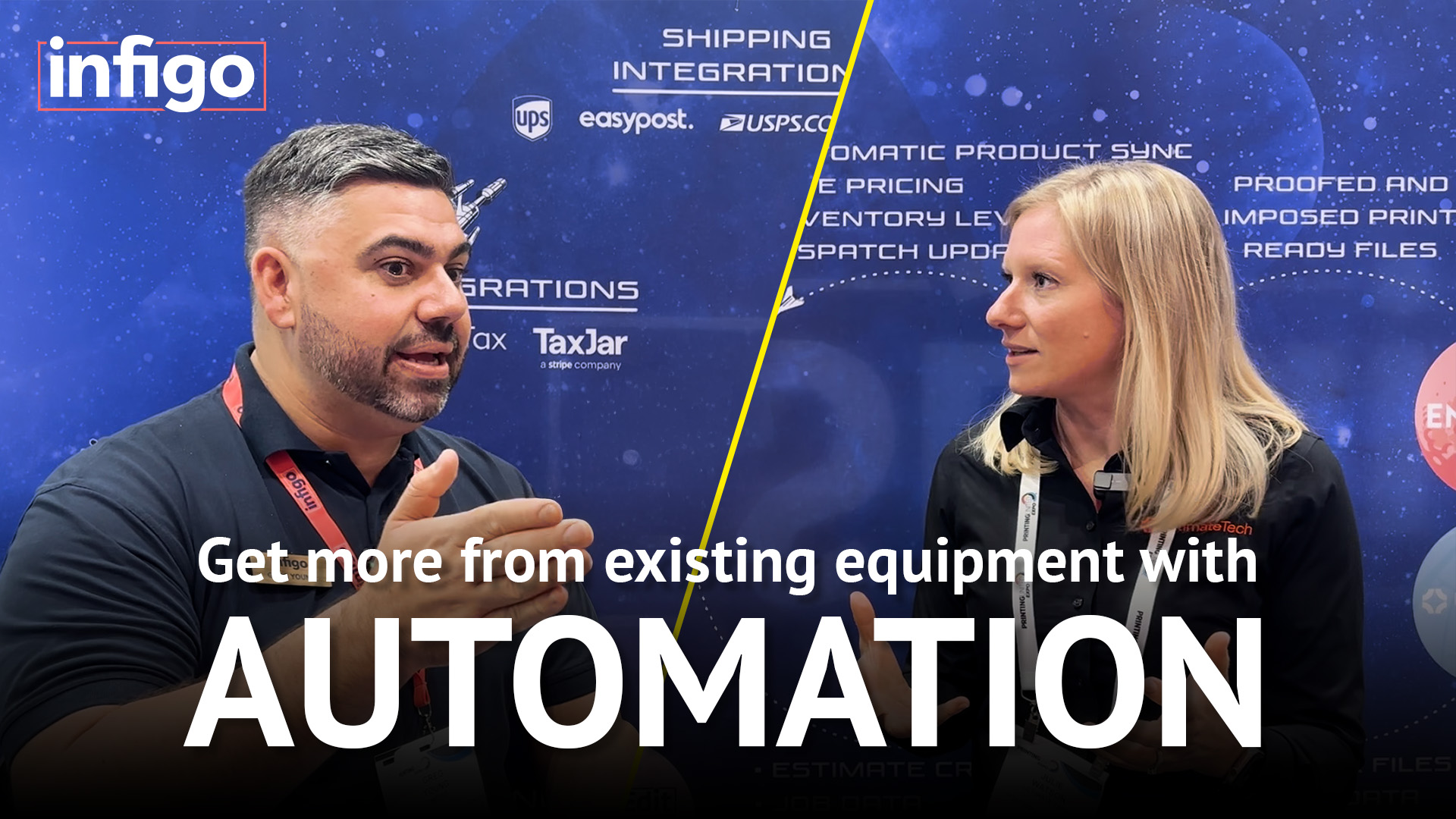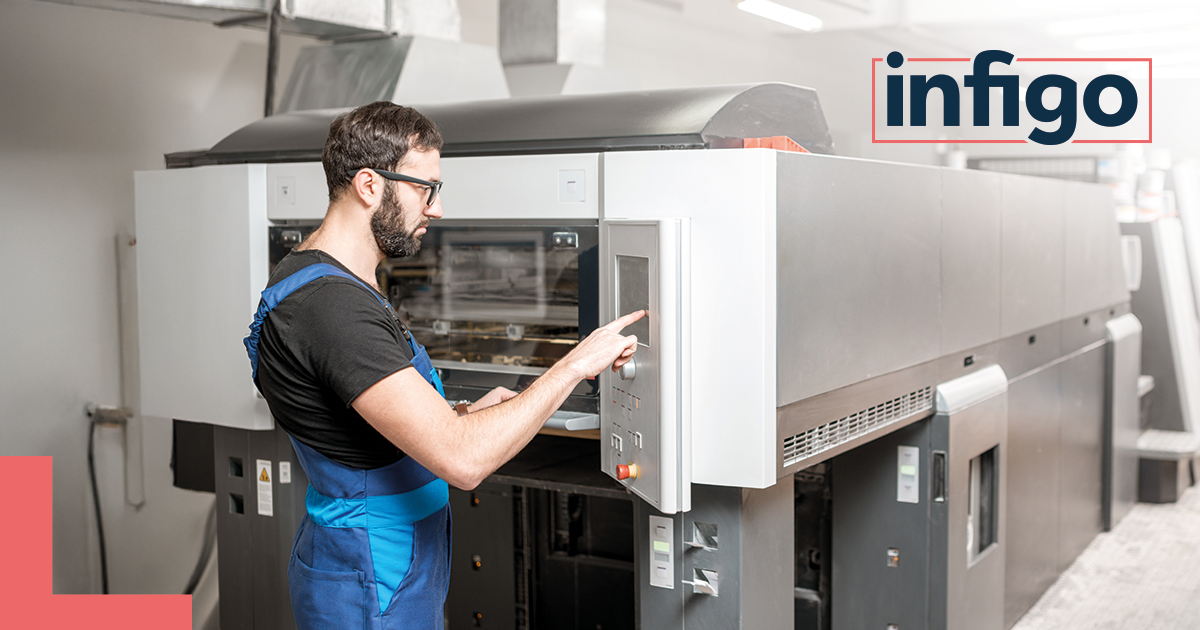The Ultimate Guide to Web-to-Print: Transforming the Print Experience for Customers and Providers
Is this a customer experience your clients could relate to? It’s Sunday morning. Emma, the marketing manager for a growing coffee franchise, suddenly remembers she’s forgotten to order the new seasonal materials.
No problem. She opens her laptop and logs into the company’s online print portal. There, she selects freshly designed posters for a new seasonal campaign, updates the artwork for store-specific flyers, and orders branded coffee cups printed with unique QR codes that link to each café’s loyalty app.
No phone calls. No waiting on quotes. No chasing suppliers.
By the time her printer opens on Monday morning, every store in her region already has promotional materials queued for production. Each one tailored to its location, perfectly on-brand, and produced with total accuracy.
And that’s just one aspect of the power of web-to-print. But not every printer is able to provide this level of customer service – even if that printer is already using some form or web-to-print technology.
In this guide, we’ll explore how web-to-print solutions are changing the game for both customers and print providers, with the most innovative platforms bringing unsurpassed levels of convenience, efficiency, and profitability to the print industry.
What is Web-to-Print?
At its core, web-to-print is an online solution that provides a seamless user experience, enabling users to customize, order, and manage print materials through a branded digital storefront.
Think of it as an e-commerce platform, such as Amazon, purpose-built for print. Instead of browsing for clothes or electronics, customers select and personalize print products like flyers, brochures, packaging, business cards, and more.
For businesses like Emma’s coffee franchise, web-to-print simplifies how local store teams order the promotional materials they need. Whether it’s a new in-store campaign or seasonal packaging, everything is templated, consistent, and instantly accessible online.
On the backend, the printer receives ready-to-print artwork, reducing the manual back-and-forth that traditionally slows down production. The result? Faster turnaround times, fewer errors, and a vastly improved customer experience.
Why Web-to-Print is a Game-Changer for Customers
Let’s take the example of Emma. Managing dozens of stores across multiple cities, she needs a streamlined way to control her brand while empowering local teams to promote their offers.
1. Ease of Ordering
Instead of managing endless email threads or requesting changes via phone, Emma’s team can log into their dedicated portal, choose pre-approved templates, and order materials in just a few clicks.
There’s no guesswork. No inconsistent designs. No outdated artwork floating around.
For franchisees, it’s intuitive and stress-free. For Emma, it’s brand control without micromanagement.
2. Speed & Convenience
With traditional print ordering, even a simple request could take days, once you factor in waiting for quotes, feedback on design tweaks, and final proofing.
Web-to-print changes that. Thanks to live previews, instant proofing, and automated approvals, orders move from concept to production at lightning speed.
Need 1,000 flyers promoting a local event? Done.
Branded coffee cups with QR codes linking to a site-specific landing page? Ordered.
Campaign posters? Delivered next-day.
Time-sensitive campaigns can launch without delay, helping franchises capitalize on every marketing opportunity.
3. Brand Consistency
Every visual element—fonts, colors, logos, and layouts—is locked into the system. No one’s guessing hex codes or uploading stretched images.
This is vital for franchise models, where maintaining a strong, consistent brand across multiple sites is non-negotiable. Emma knows every asset ordered is on-brand, even when it’s customized for a local offer or store-specific QR code.
4. Cost Control & Budget Visibility
Web-to-print platforms offer transparent, consistent pricing. Emma can see cost breakdowns instantly and track spend across regions, stores, or campaigns.
Because everything is centralized, there’s also greater visibility for forecasting, budgeting, and ROI tracking. Plus, she can implement approval workflows to ensure stores don’t overspend or go rogue with orders.
The Benefits of Web-to-Print for Print Providers
Now, let’s flip the perspective. While Emma is saving time and reducing stress, the print provider on the other end is experiencing their own transformation.
1. Increased Efficiency
When orders come through a web-to-print system, much of the manual legwork disappears. No more deciphering email briefs or reworking low-res artwork. Instead, the printer receives production-ready files that slot straight into the workflow.
Fewer touchpoints. Fewer errors. Faster output.
Or to put it another way, it’s not just a time-saver, it’s a margin booster. According to a Market Growth Reports, 81% of enterprises that invested in web-to-print platforms recorded a “significant reduction” in operational costs within the first year of deployment.
2. Scalability Without More Overhead
Imagine trying to service 100 coffee shops manually, each with unique requirements. The admin alone would be unmanageable.
With web-to-print, printers can scale without expanding the team. Each customer gets a dedicated, branded storefront, and orders are managed autonomously by the client.
Whether you’re onboarding one franchise or ten, the process remains smooth and manageable.
3. Streamlined Workflow & Integration
Modern web-to-print systems don’t operate in isolation (which is where many platforms that were “ground-breaking” a few short years ago, fall apart). The leading web-to-print platforms integrate with MIS platforms, CRM tools, payment gateways, shipping providers and more, creating an end-to-end ecosystem and a seamless workflow.
From artwork submission to delivery tracking, the entire journey is visible, automated, and efficient.
That means less time spent chasing down job statuses and more time focusing on growing the business.
4. New Revenue Streams
Web-to-print opens doors to new sales models.
From offering pre-packaged marketing bundles for specific industries to upselling with personalised print products like coffee cups with QR codes, the leading integrated web-to-print platforms open up a whole new world of business.
You can even white-label your platform for resellers or agencies, expanding your reach without diluting your brand.
And because your portal is always online, you’re no longer restricted by 9-to-5 business hours. Orders can come in at any time, from anywhere.
Industry data shows that 95% of businesses seeing increased demand for self-service options, across all sectors, with 78% of users preferring mobile access, making customer portals essential for modern business operations.
5. Customer Retention
Clients like Emma don’t just want a print supplier, they want a partner who makes their job easier.
Offering a slick, modern portal does more than streamline operations, it builds loyalty. When your system becomes embedded in a client’s daily workflow, switching providers becomes far less likely.
In short: better tech = better retention. Research from Aberdeen (cited by Conquest Graphics) found that companies switching to portal-based ordering achieved 17% cost savings on print materials and related services.
Moreover, in companies with more than 1,000 employees, 39% reported savings in the range of 10–25%, and 13% reported over 25% savings.
Use Cases: Who is Web-to-Print For?
While Emma’s coffee chain offers a relatable example, the truth is that web-to-print suits a huge range of sectors, including:
- Print Service Providers looking to automate ordering, reduce manual touchpoints, and offer branded storefronts to their clients
- Corporate marketing teams needing centralized brand control across departments or regions
- Agencies managing print on behalf of multiple clients
- Education and healthcare institutions producing location-specific materials
- Retail and eCommerce brands needing packaging and POS collateral
- Franchise and hospitality groups managing national campaigns with local execution
If there’s a need for consistent, repeatable, customisable print then web-to-print can deliver the goods.
Key Features to Look for in a Web-to-Print Platform
As we have alluded to, not all platforms are created equal. And even systems that were considered cutting edge just a few years ago, no longer cut the mustard.
Whether you’re a printer or a business looking to implement web-to-print, here are the essentials to look for:
- Branded storefronts tailored to your customers or departments
- User-friendly design editors with template locking and brand control
- Product catalog management for a range of print products
- Automated workflows for production, approvals and fulfilment
- Real-time analytics and reporting dashboards
- Third-party integrations with tools like MIS, payment, and shipping providers
The goal isn’t just automation—it’s to enhance the overall print experience at every stage.
The Future of Print is Online
The print world is evolving—and fast. Today’s customers expect convenience, speed, and personalization. Traditional workflows can’t keep up.
Web-to-print bridges the gap between digital expectations and physical output.
For customers like Emma, it means less admin, better campaigns, and total control. For printers, it means leaner operations, increased revenue, and long-term client loyalty.
Whether you’re scaling your franchise, managing a marketing team, or looking to future-proof your print business web-to-print isn’t just a smart choice. It’s a strategic one.
To discover how Infigo could help to transform your business, book a call with one of our workflow experts now.





